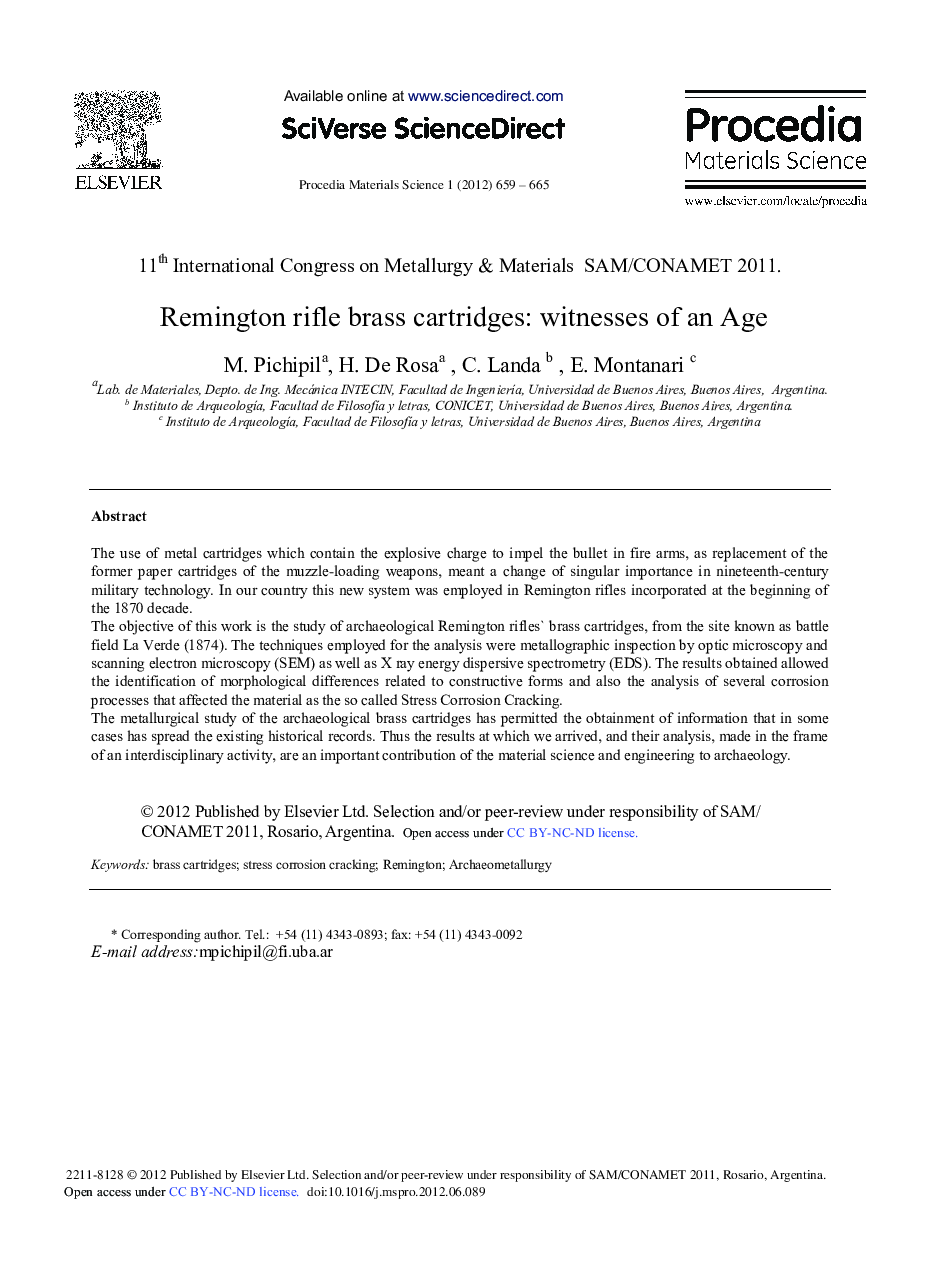| Article ID | Journal | Published Year | Pages | File Type |
|---|---|---|---|---|
| 1634936 | Procedia Materials Science | 2012 | 7 Pages |
The use of metal cartridges which contain the explosive charge to impel the bullet in fire arms, as replacement of the former paper cartridges of the muzzle-loading weapons, meant a change of singular importance in nineteenth-century military technology. In our country this new system was employed in Remington rifles incorporated at the beginning of the 1870 decadeThe objective of this work is the study of archaeological Remington rifle's brass cartridges, from the site known as battle field La Verde (1874). The techniques employed for the analysis were metallographic inspection by optic microscopy and scanning electron microscopy (SEM) as well as X ray energy dispersive spectrometry (EDS). The results obtained allowed the identification of morphological differences related to constructive forms and also the analysis of several corrosion processes that affected the material as the so called Stress Corrosion CrackingThe metallurgical study of the archaeological brass cartridges has permitted the obtainment of information that in some cases has spread the existing historical records. Thus the results at which we arrived, and their analysis, made in the frame of an interdisciplinary activity, are an important contribution of the material science and engineering to archaeology
